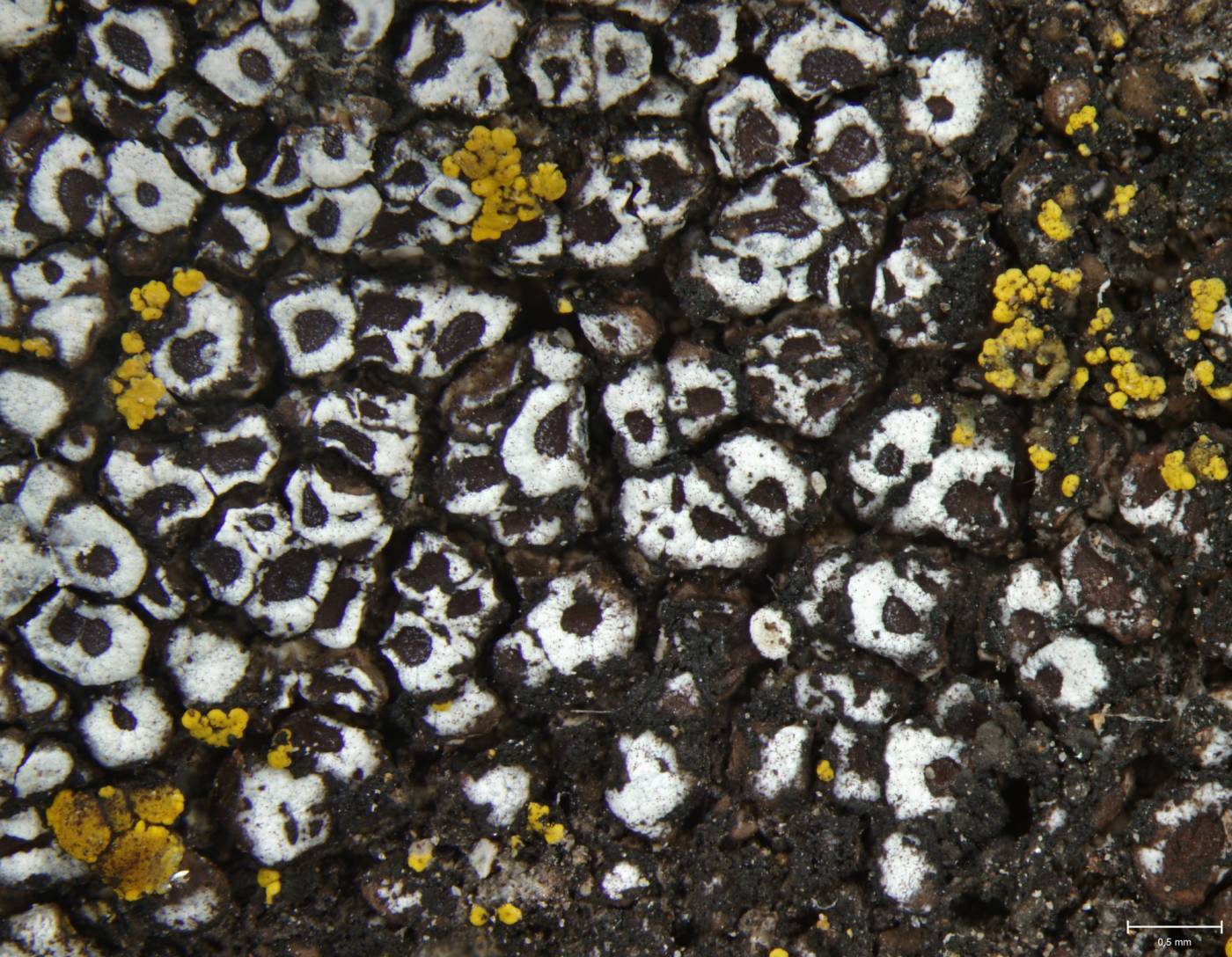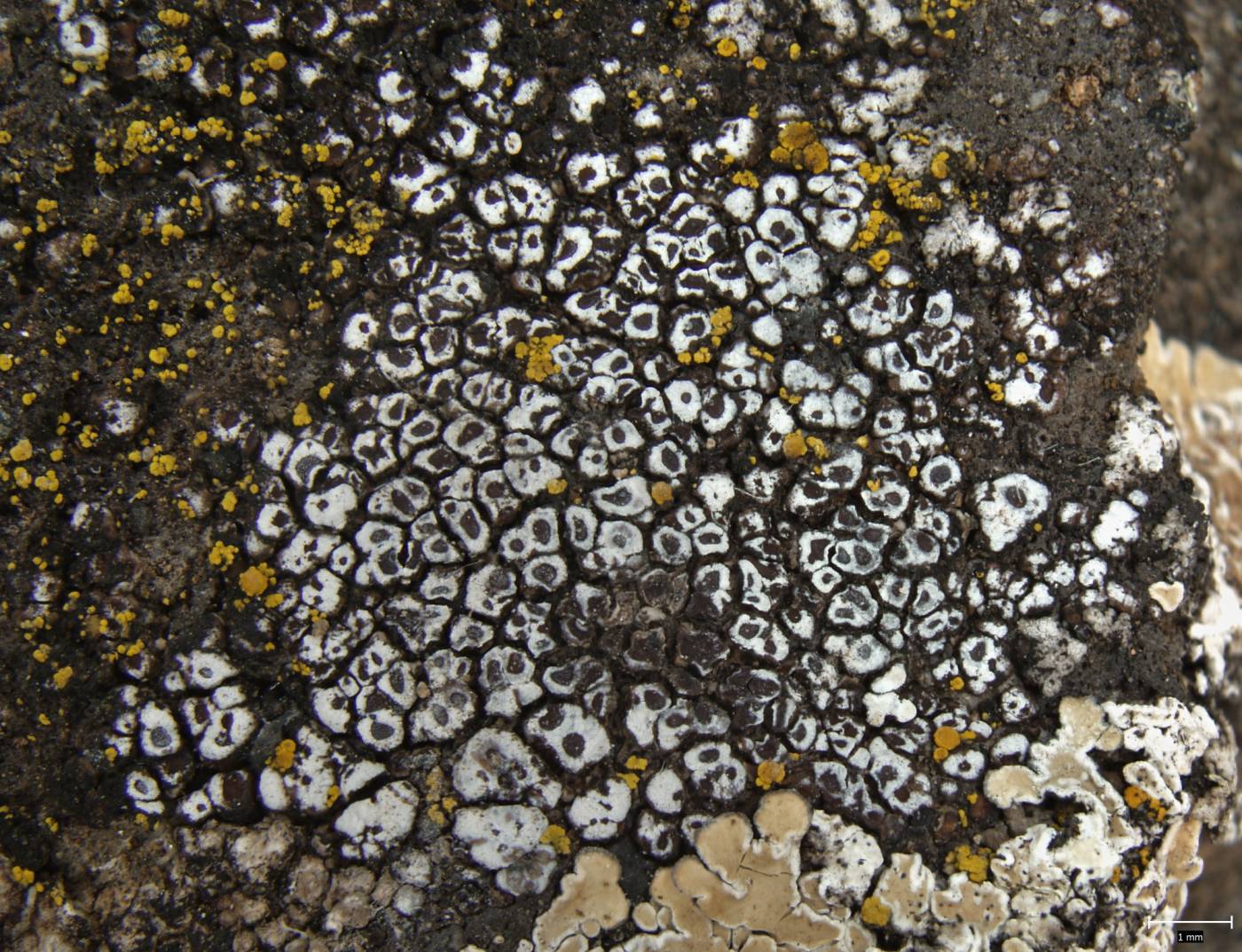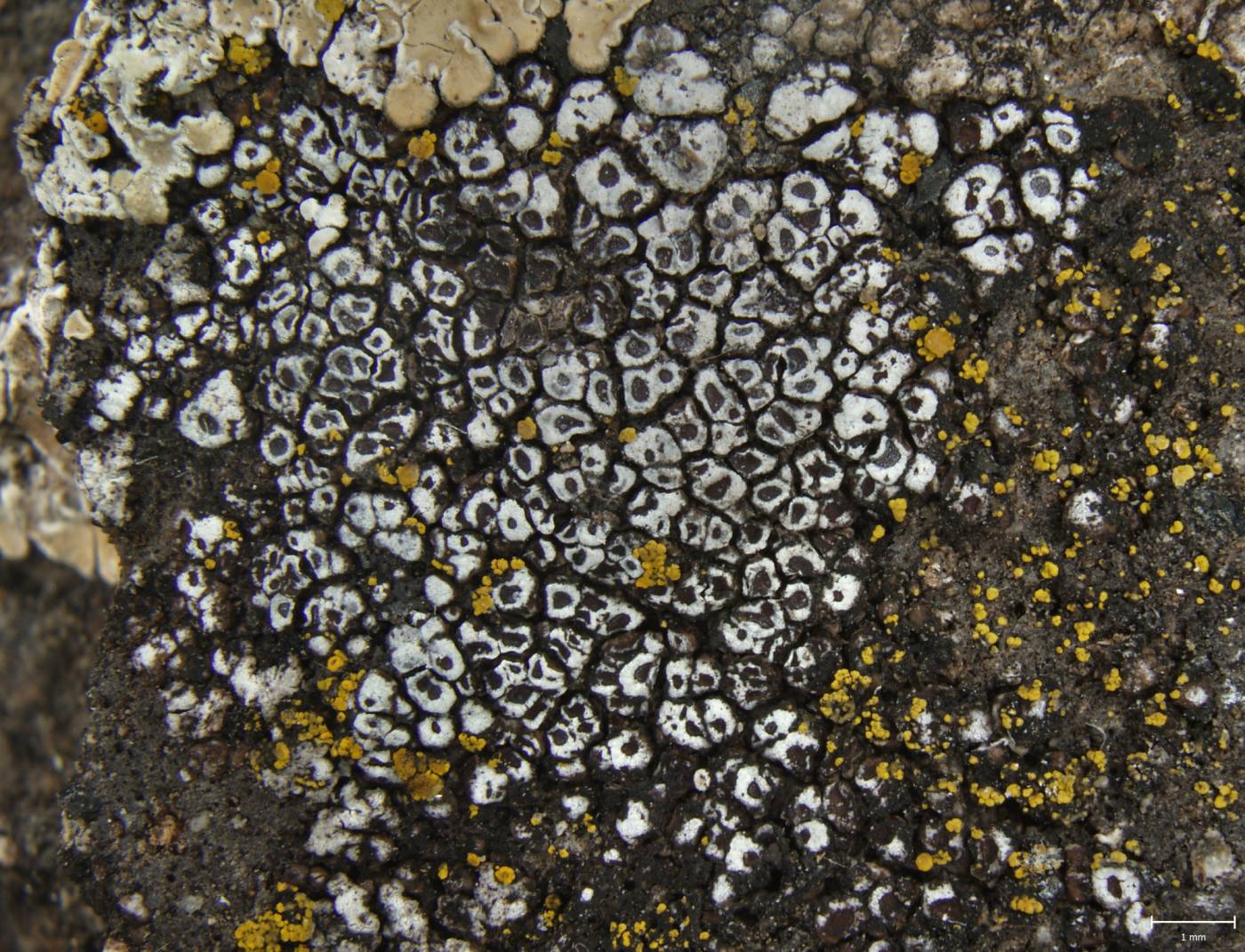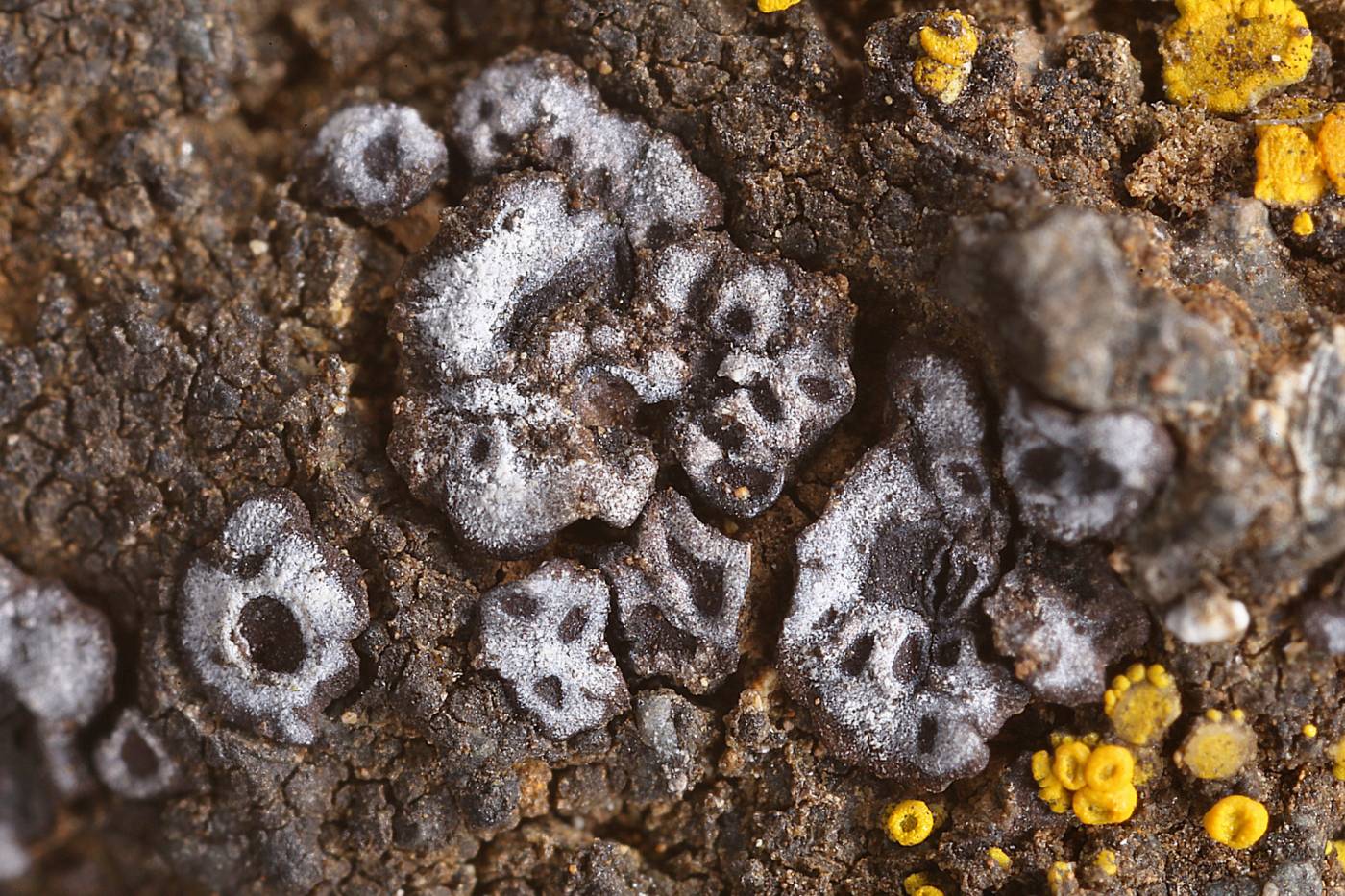The species occurs at usually low elevations (up to 550 m) in full sun on a variety of rock types, mostly on basic intrusive rock, throughout Europe. In Germany it has been collected on concrete around a grave and on a calcareous stone wall. In the Czech Republic A. versicolor is recently known from about 10 verified collections in xerothermic areas.
The name A. cineracea Nyl. was used for this taxon by some Czech lichenologists and specimens need to be revised which were collected especially in the Krkonoše Mts and Mohelno. Most of the small areoles (usually 1 mm wide), often with one apothecium, are pruinose, no matter what the substrate. In early development A. versicolor and A. umbilicata can be confused, but the areoles of A. umbilicata eventually become lobulate and produces gyrophoric acid (C+ red cortex).
Literature: Knudsen K., Kocourková J., Nordin A. & Sipman H.J.M. (2015): Acarospora cinerascens (Acarosporaceae), a poorly known species from the southern Central Alps (Italy and Switzerland). – Herzogia 28: 690–696.
taxonomic classification:Ascomycota → Lecanoromycetes → Acarosporales → Acarosporaceae → Acarospora
Red List (Liška & Palice 2010):VU – vulnerable
Red List (Malíček 2023):C2 – strongly endangered
Occurrence in the Czech Republic
All records: 19, confirmed 15. One click on a selected square displays particular record(s), including their source(s).



